Time:2025-06-27
In the ever - evolving landscape of lighting technology, silicone neon LED strips have emerged as a revolutionary product, blending the classic charm of neon lighting with the advanced capabilities of LED technology and the versatility of silicone materials. These strips have gained significant traction across various industries, from interior design and architecture to advertising and entertainment, due to their unique combination of functionality, durability, and aesthetic appeal. This article delves into the intricacies of silicone neon LED strips, exploring their construction, key features, applications, installation, and future trends.
Construction and Technology of Silicone Neon LED Strips
The Silicone Encapsulation
The outer layer of silicone neon LED strips is composed of high - quality silicone, a synthetic polymer known for its exceptional properties. Silicone's flexibility is one of its most notable features, allowing the strips to bend and conform to a wide range of shapes and surfaces. Whether it's wrapping around curved edges of furniture, following the contours of architectural structures, or fitting into tight corners, the silicone - coated strips can adapt effortlessly.
This material also offers excellent protection to the internal components. Silicone is highly resistant to environmental factors such as water, dust, and UV radiation. Its waterproof nature makes the LED strips suitable for both indoor and outdoor applications, ensuring that they can withstand rain, snow, and high humidity without damage. The UV resistance property prevents the silicone from degrading under prolonged sunlight exposure, maintaining the integrity and appearance of the strips over time. Additionally, silicone is resistant to abrasion, protecting the strips from physical damage caused by friction or minor impacts.
The LED Lighting Elements
At the core of silicone neon LED strips are the LED chips, which are responsible for generating light. LEDs, or Light - Emitting Diodes, are semiconductor devices that convert electrical energy into light with high efficiency. They consume significantly less power compared to traditional lighting sources, such as incandescent bulbs, while still delivering bright and vivid illumination. This energy - efficiency not only helps in reducing electricity bills but also makes them an environmentally friendly choice.
LEDs also have a long lifespan, reducing the need for frequent replacements. With proper installation and usage, they can operate for an extended period, making silicone neon LED strips a reliable long - term lighting solution. Moreover, LEDs can produce a vast spectrum of colors, either in single - color configurations or through RGB (Red, Green, Blue) technology. RGB - enabled strips allow for dynamic color - changing effects, enabling users to create a wide variety of lighting scenes and moods.
The Circuitry and Wiring
Silicone neon LED strips are equipped with a carefully designed circuitry and wiring system. A driver or power supply is an essential component that regulates the electrical current flowing to the LEDs, ensuring stable and consistent operation. The wiring within the strip is designed to be flexible yet durable, capable of withstanding the bending and movement that the strip may experience during installation and use.
Connectors are used to join multiple strips together, allowing for longer lighting runs or more complex lighting setups. High - quality connectors ensure a secure and reliable electrical connection, preventing issues like loose connections that could lead to flickering or non - functioning lights. Some strips come with user - friendly connectors that simplify the installation process, even for those with limited technical knowledge.
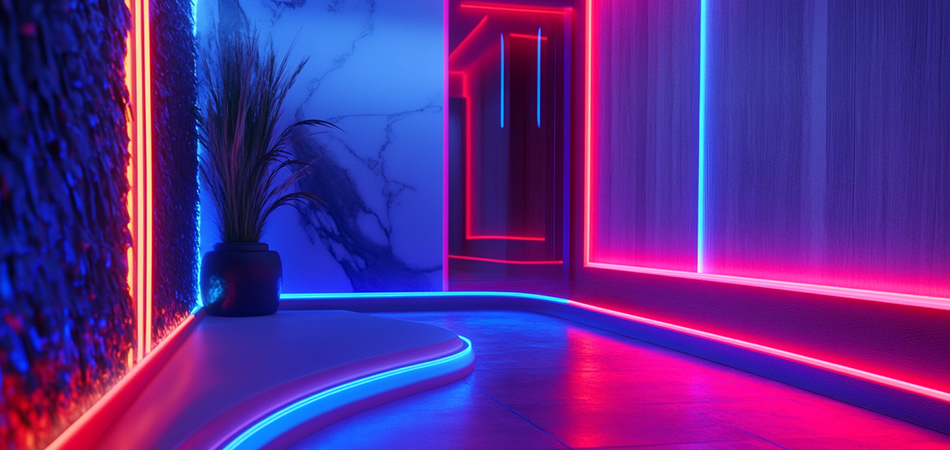
Key Features and Benefits of Silicone Neon LED Strips
Durability and Long - Term Performance
The combination of the robust silicone casing and high - quality LED components makes silicone neon LED strips highly durable. They can withstand harsh environmental conditions, including extreme temperatures, moisture, and dust. This durability ensures that the strips maintain their performance and appearance over time, reducing the need for frequent maintenance and replacement. Whether used in outdoor signage, where they are exposed to the elements, or in high - traffic indoor areas, these strips can endure the rigors of daily use.
Energy Efficiency
Silicone neon LED strips are highly energy - efficient, consuming a fraction of the power compared to traditional lighting options. This energy - saving feature not only benefits the environment by reducing carbon emissions but also results in significant cost savings for users. In large - scale installations, such as commercial buildings or public spaces, the cumulative energy savings from using LED strips can be substantial over time.
Aesthetic Versatility
One of the most appealing aspects of silicone neon LED strips is their aesthetic versatility. They can be used to create a wide range of lighting effects, from soft, ambient glows to vibrant, eye - catching displays. The ability to produce different colors and lighting patterns allows for endless customization, making them suitable for various design styles and applications. In interior design, they can be used to accentuate architectural features, highlight artwork, or create a specific mood in a room. In advertising, they can be used to create attention - grabbing signs and displays.
Installation Flexibility
Silicone neon LED strips are extremely flexible in terms of installation. Their bendable nature allows them to be installed on a variety of surfaces, including flat, curved, or irregular ones. They can be easily cut to the desired length at designated intervals, enabling users to customize the length of the strip according to their specific needs. Many strips come with adhesive backing, which simplifies the installation process, allowing them to be directly attached to clean, flat surfaces. For more permanent installations, mounting clips or screws can also be used.
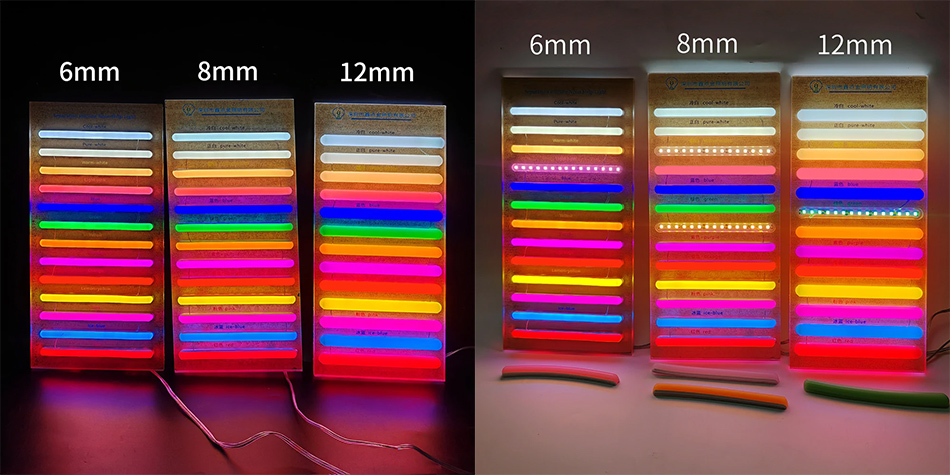
Applications of Silicone Neon LED Strips
Interior Design
In interior design, silicone neon LED strips are used in numerous ways to enhance the aesthetic and functionality of spaces. They are commonly used for cove lighting, where the strips are installed in the recessed areas between the ceiling and the wall, creating a soft, diffused glow that adds warmth and depth to the room. Under - cabinet lighting in kitchens and bathrooms is another popular application, providing task lighting while also adding a decorative touch.
These strips can also be used to highlight architectural features, such as columns, arches, or niches. By installing the strips along these features, designers can draw attention to the unique elements of the space, creating a more visually appealing environment. Additionally, silicone neon LED strips are used to create accent lighting for artwork, bookshelves, and display cases, making the items on display more prominent.
Architectural Lighting
In architecture, silicone neon LED strips play a crucial role in enhancing the appearance of buildings, both indoors and outdoors. They can be used to outline the edges of buildings, highlighting their architectural details and creating a striking visual effect at night. On the interior, they can be used to illuminate staircases, corridors, and other common areas, providing both functionality and aesthetic appeal.
For outdoor architectural lighting, these strips can be installed on facades, around windows and doors, or along the edges of roofs. They can be used to create dynamic lighting displays that change colors and patterns, adding a sense of movement and excitement to the building's exterior. This type of lighting not only enhances the building's aesthetic appeal but also improves its visibility and safety at night.
Advertising and Signage
Silicone neon LED strips are widely used in the advertising and signage industry due to their bright and eye - catching nature. They can be used to create illuminated signs, logos, and displays that are highly visible, even from a distance. The ability to produce different colors and lighting effects allows for the creation of unique and attention - grabbing advertisements.
These strips can be bent and shaped into various forms, enabling the creation of custom - designed signs that are tailored to the specific needs of the business. In retail stores, they can be used to highlight products, create window displays, or add a decorative touch to the storefront. In entertainment venues, such as nightclubs and theaters, they can be used to create dynamic and engaging signage that attracts customers.
Event and Entertainment Lighting
For events and entertainment, silicone neon LED strips are a popular choice for creating a vibrant and exciting atmosphere. They can be used to decorate event venues, such as weddings, parties, concerts, and festivals. By using different colors and lighting patterns, event organizers can create a customized lighting scheme that matches the theme and mood of the event.
In nightclubs and bars, these strips can be used to create dynamic lighting shows that synchronize with the music, enhancing the overall entertainment experience. They can be installed on the walls, ceilings, and dance floors, creating a visually stimulating environment for guests. In theaters and stages, silicone neon LED strips can be used to create backdrops, highlight performers, and add special effects to the performance.
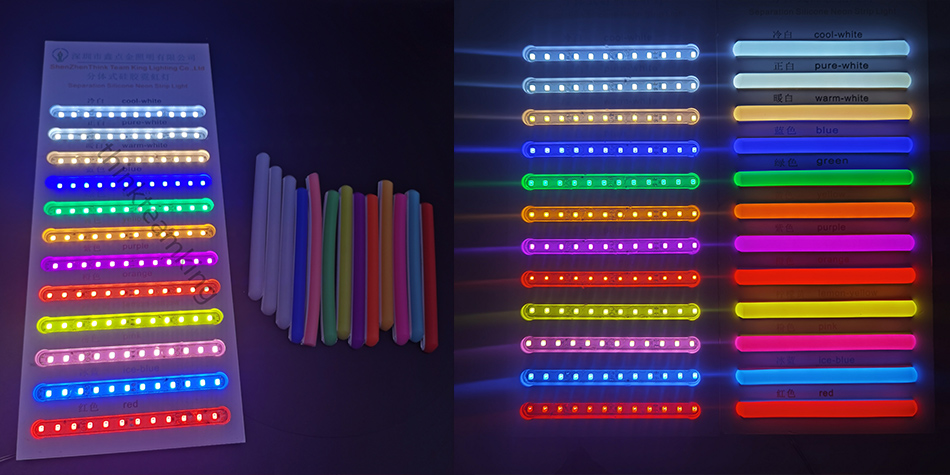
Installation Considerations for Silicone Neon LED Strips
Surface Preparation
Before installing silicone neon LED strips, proper surface preparation is essential. The surface where the strips will be attached should be clean, dry, and free of any debris. If using adhesive backing, a smooth surface is ideal for maximum adhesion. Rough or uneven surfaces may require additional preparation, such as sanding or the use of a primer, to ensure a secure bond.
For outdoor installations, it's important to consider the weather conditions. The surface should be dry before installation, and it's advisable to avoid installing the strips in extreme weather, such as during heavy rain or strong winds. This helps to ensure that the adhesive or mounting hardware adheres properly and that the strips are not damaged during the installation process.
Electrical Connection
Proper electrical connection is crucial for the safe and efficient operation of silicone neon LED strips. The first step is to determine the appropriate power source. Some strips can be connected directly to a household electrical outlet, while others may require a low - voltage power supply. It's important to follow the manufacturer's instructions regarding the electrical connection to avoid overloading the circuit or damaging the strips.
When running the wiring, it should be routed in a safe and organized manner. Avoid areas where the wiring could be pinched, cut, or exposed to moisture. In outdoor installations, use waterproof conduits or bury the wiring underground to protect it from the elements. For indoor installations, hide the wiring behind walls, furniture, or other objects to maintain a clean and tidy appearance.
Mounting and Securing the Strips
There are several ways to mount and secure silicone neon LED strips. If the strips have adhesive backing, carefully peel off the protective layer and press the strip firmly onto the surface, starting from one end and working towards the other. Make sure to smooth out any air bubbles or wrinkles as you go. For more permanent or heavy - duty installations, or for surfaces where adhesive may not be suitable, use mounting clips, screws, or brackets.
When bending the strips around corners or curves, follow the manufacturer's guidelines regarding the minimum bending radius. Exceeding the minimum bending radius can damage the strips and affect their performance. In some cases, special connectors or adapters may be required to make the bends more smoothly.
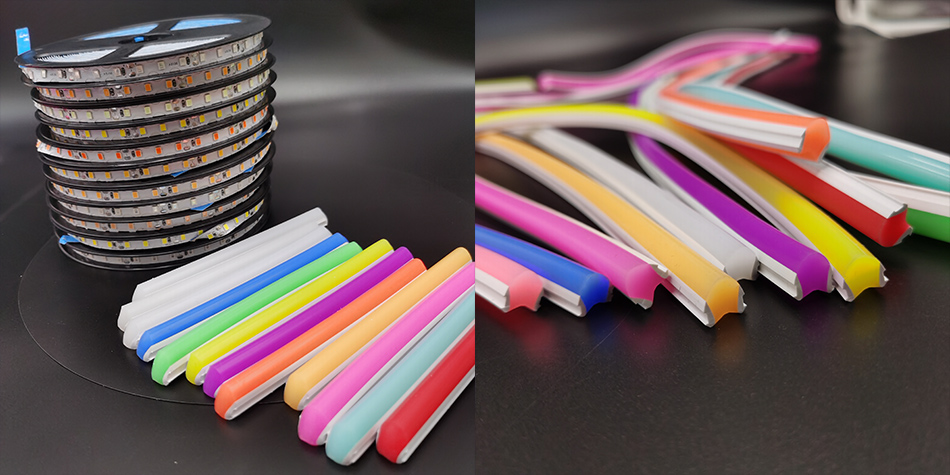
Maintenance and Troubleshooting of Silicone Neon LED Strips
Regular Inspection
Regular inspection of silicone neon LED strips is recommended to ensure their optimal performance. Periodically check the strips for any signs of damage, such as cracks in the silicone casing, loose connections, or a decrease in light output. If any damage is detected, address the issue promptly to prevent further problems.
Also, check the electrical connections to make sure they are secure and free of corrosion. Loose or corroded connections can cause the strips to flicker, dim, or not work at all. If you notice any abnormal behavior, such as inconsistent lighting or color changes, it could be an indication of a problem with the strips or the electrical system.
Cleaning
Cleaning silicone neon LED strips is a simple process. Use a soft, dry cloth to gently wipe away any dust or dirt that has accumulated on the surface of the silicone casing. Avoid using harsh chemicals or abrasive cleaners, as they can damage the silicone and affect the performance of the strips.
In outdoor installations, the strips may need to be cleaned more frequently, especially in areas with high pollution or dust levels. Regular cleaning not only helps to maintain the appearance of the strips but also ensures that the light output is not reduced due to dirt or debris blocking the LEDs.
Troubleshooting Common Issues
If the silicone neon LED strips are not working properly, there are several common issues to check. First, verify the electrical connection. Make sure that the power supply is functioning correctly and that all connections are secure. A loose connection can cause the strips to flicker or not turn on at all.
If the electrical connection is fine, check for any physical damage to the strips. A damaged LED chip or a break in the wiring can also cause problems. In some cases, if only a section of the strip is not working, it may be possible to isolate and repair the problem. However, if the entire strip is not working, it may need to be replaced. For strips with color - changing or special lighting effects, check the controller or the settings to ensure they are configured correctly.
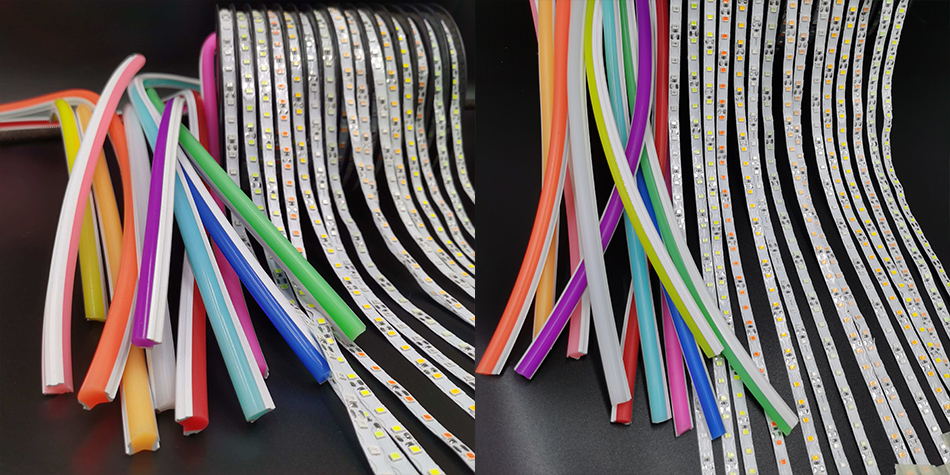
Trends and Future Developments in Silicone Neon LED Strips
Smart Lighting Integration
One of the emerging trends in silicone neon LED strips is the integration of smart lighting technology. Smart LED strips can be controlled using a smartphone app, a voice - activated assistant, or a home automation system. This allows users to adjust the color, brightness, and lighting effects of the strips remotely, providing greater convenience and customization.
Smart lighting systems also enable features such as scheduling, where the strips can be set to turn on and off at specific times. Additionally, some smart strips can be programmed to respond to certain events, such as turning on when motion is detected or changing color based on the ambient light level. This integration with smart technology is likely to become more widespread in the future, enhancing the functionality and user experience of silicone neon LED strips.
Advancements in LED and Silicone Technologies
As technology continues to evolve, we can expect to see advancements in both LED and silicone materials. Newer LED chips may offer even higher brightness levels, better color rendering, and improved energy efficiency. This will further enhance the performance of silicone neon LED strips, making them even more suitable for a wider range of applications.
In terms of silicone, there may be developments in materials that offer enhanced flexibility, durability, and resistance to extreme conditions. These advancements will make the strips more adaptable to different environments and installation requirements, and will also increase their lifespan and reliability.
Sustainable and Eco - Friendly Solutions
With the growing focus on sustainability and environmental protection, there is a trend towards developing more sustainable and eco - friendly silicone neon LED strips. This may involve the use of recycled materials in the production of the silicone casing and other components. Additionally, manufacturers may focus on reducing the energy consumption of the strips even further, for example, by improving the efficiency of the power - conversion systems.
Some companies may also explore the use of biodegradable or compostable materials in certain parts of the strip construction, although this may be more challenging due to the need for durability in lighting applications. Overall, the development of sustainable and eco - friendly solutions in silicone neon LED strips aligns with the global push towards a more sustainable future.
In conclusion, silicone neon LED strips have become a game - changing product in the lighting industry, offering a unique combination of functionality, durability, and aesthetic appeal. Their wide range of applications, from interior design and architecture to advertising and entertainment, makes them a versatile choice for various projects. As technology continues to advance, we can expect these strips to become even more sophisticated and widely used, with exciting developments in smart integration, material advancements, and sustainability on the horizon.